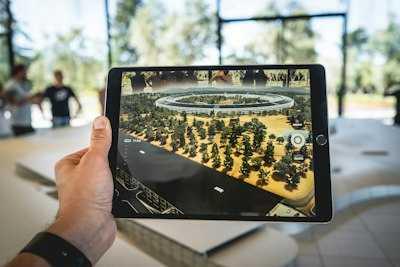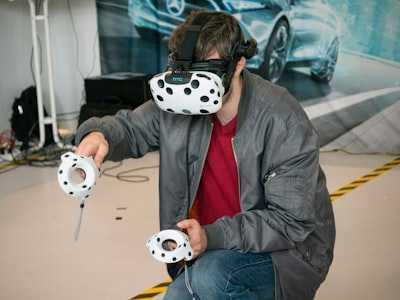What Is Augmented Reality: All You Need To Know
Curated from: informationprime.wordpress.com
Ideas, facts & insights covering these topics:
7 ideas
·735 reads
2
2
Explore the World's Best Ideas
Join today and uncover 100+ curated journeys from 50+ topics. Unlock access to our mobile app with extensive features.
What Is Augmented Reality: All You Need To Know
Augmented reality (AR) is an interactive experience of a real-world environment where the objects that reside in the real world are enhanced by computer-generated perceptual information, sometimes across multiple sensory modalities, including: visual, auditory, haptic, somatosensory and olfactory.
Augmented reality (AR) incorporates three basic features a combination of real and virtual worlds, real-time interaction, and accurate 3D registration of virtual and real objects.
17
212 reads
Applications/ Use
AR has been widely used in the video games industry, most notably for Pokémon Go but Pikachu’s aside, there are many other uses for AR in our everyday lives. Some of which are:
15
113 reads
Visual art
Augmented reality aids the progression of visual art in museums by allowing museum visitors to view artwork in galleries in a multidimensional way through their phone screens. This allows individuals to see hidden aspects and information about the paintings, and to be able to have an interactive technological experience with artwork as well.
15
77 reads
Video games
The gaming industry embraced AR technology. A number of games were developed for prepared indoor environments, such as AR air hockey, Titans of Space, collaborative combat against virtual enemies, and AR-enhanced pool table games.
Augmented reality allowed video game players to experience digital game play in a real-world environment.
15
69 reads
Retail
Perhaps the most important application of AR for most users will be in retail applications, notably “try before you buy.” With more people shopping from home and less emphasis on public retail spaces, AR will allow consumers to see how products will look in their own homes before purchasing them. This can take the guesswork out of the buying process. There are already a number of apps, such as Wayfair, Houzz, and Ikea which let you place furniture and other products in your own real-world environments.
15
77 reads
Differences with Virtual Reality
Although Augmented reality and Virtual reality share similarities, they are not the same, AR is not a fully immersive experience like virtual reality (VR). While virtual reality requires users to don a special headset and pulls them into a completely digital world, AR lets them continue interacting with the physical world around them.
15
92 reads
The future of augmented reality
Using Phones and tablets are currently ARs most popular application but Research continues apace on including AR functionality in contact lenses, and other wearable devices. The ultimate goal of augmented reality is to create a convenient and natural immersion, so there’s a sense that phones and tablets will get replaced, though it isn’t clear what those replacements will be. Even glasses might take on a new form, as “smart glasses” are developed for blind people.
15
95 reads
IDEAS CURATED BY
Writer, artist, Accountant and a forever learner. Learning, loving, Hoping.
CURATOR'S NOTE
This ideas provide a simple introduction that helps in understanding what augmented reality is and how it is applied to the real world.
“
James Oluwatobi's ideas are part of this journey:
Learn more about technologyandthefuture with this collection
The differences between Web 2.0 and Web 3.0
The future of the internet
Understanding the potential of Web 3.0
Related collections
Similar ideas
19 ideas
3 ideas
Who popularized the term 'virtual reality'?
science.howstuffworks.com
Read & Learn
20x Faster
without
deepstash
with
deepstash
with
deepstash
Personalized microlearning
—
100+ Learning Journeys
—
Access to 200,000+ ideas
—
Access to the mobile app
—
Unlimited idea saving
—
—
Unlimited history
—
—
Unlimited listening to ideas
—
—
Downloading & offline access
—
—
Supercharge your mind with one idea per day
Enter your email and spend 1 minute every day to learn something new.
I agree to receive email updates







